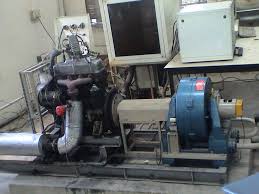Mechanical Engineering Interview Questions And Ans.
Material Science Questions And Answers
Q.1 What is Gibs phase rule?
Ans. Gibs phase rules is given as...
P+F = C+2
Where, P= no. of phase.
F=no. of degree of freedom.
C=no. of components
Q.2 What kind of steel is called stainless steel?
Ans. 18:8 steel is called stainless steel. It is also called Austenitic Steel consists of 18% chromium,8% Nickel. Amount of chromium more then 12% leads to corrosion.
Q.3 What is the composition of High Speed Steel (HSS)?
The composition of high speed steel is C=.67%, W=18%, Cr=4%, V=1%. It is also called as 18-4-1.
Q.4 What Iron is very poor iron?
Ans. Wrought iron contains as much as 99.9% iron. Since it contains very little amount of carbon. It is very poor Iron.
Q.5 What is the use of Cupola furnace?
Ans. Cupola furnace is used to produce cast iron from Pig iron.
Q. 6 What is Plasticity?
Plasticity is the property of a material by virtue of which it may be permanently deformed when it has been subjected to an externally applied force great enough to exceed the elastic limit.
Q.7 Why high carbon steel has poor weldability?
Ans. As the amount of carbon increase , its wealdability since from the material given, high carbon steel has maximum amount of carbon, it will posses less or poor weldability.
Q. 8 What is malleability?
Ans. The ability of metal to be formed by hammering or rolling is called malleability.
Q.9 What is season Creaking? How it happen?
Ans. Season creaking is the result of combine effect of corrosion internal stress. The term seasonal creaking is usually applied to stress corrosion creaking of brass.
Q. 10 What is the carbon content of Hyper Eutectoid?
Ans. The carbon content of Hyper eutectoid is 0.76 to 2.1 percent carbon.

Thermodynamics And Applied Thermodynamics Questions
Q.1 What is the meaning of 100% thermal efficiency of a heat engine?
Ans. 100% thermal efficiency of an engine means there is no heat rejection, whatever amount is supplied to the engine is converted into the work. It violates the second law of thermodynamics.
Q.2 What is isothermal process?
Ans. For isothermal process
PV= Constant
pdV + VdP = 0
pdV = -VdP
Q.3 What is control volume?
Ans. Certain fixed reason in the space through which moving substance flow on our analysis is concentrated.
Q.4 What is thermodynamics cycle?
Ans. Thermodynamic cycle can be define as a series of state changes such that the final and initial stage are identical.
Q.5 What will happened to the total energy of a system according to first law of thermodynamics?
Ans. Since the first law of thermodynamics defines as law of conservation of energy hence total energy of a system will remain constant.
Fluid Mechanics Important Questions
Q 1 What is Ideal Fluid?
Ans. A fluid that is incompressible and is having no viscosity is known as an ideal fluid.
Ideal fluid is only an imaginary fluid as all the fluids, which exist have some viscosity.
Q.2 What is surface tension?
Ans. Surface tension is defined as a line force per unit length.
Q.3 What is Newtonian Fluid?
Ans. The fluid which obeys Newton's law of viscosity is known as a Newtonian fluid. Like air, water, kerosene.
Q.4 What is the cause of surface tension?
Ans. Surface tension is caused due to the cohesion of fluid-particle at the surface, the property of cohesion enables a liquid to resist tensile stress.
Q.5 The mercury is called a not-wetting liquid because it doesn't wet the surface. Why it did not wet the surface?
Ans. The force between like molecules is known as cohesion and the force between unlike molecules is known adhesion. Due to the predominant cohesion force, mercury posses non-wetting characteristics.
Q.6 Why toothpaste is an example of Bingham plastic?
Ans. Since some initial force is required to have the flow of toothpaste hence it is the example of Bingham plastic.
Q.7 Why capillary rise is caused?
Ans. Capillary rise is due to adhesion and capillary depression is due to cohesion and capillary is due to both cohesion and adhesion.
Q.8 What is the approximate value of the capillary angle for mercury?
Ans. 132 degree.
Q.9 What are the properties of good manometric fluid? Why mercury is used as manometric fluid?
Ans. Manometric fluid should have low vapor pressure and high density to have less height of the piezometric tube.
Q. 10 What is the property on the change of which fluid doesn't offer any resistance?
Ans. The fluid doesn't offer any resistance to change of shape and deform under the action of a small force.
Students in each exam we scored some marks. And try to calculate the percentage of our marks. I am suggesting you the Best Online Marks Percentage Calculator.

What You Think?
Do you wanna more questions like this?
IC Engine Important Questions
Q.1 Why two stroke CI engine is used for ships?
Ans. Due to low weight, compactness and high power output two stroke CI engines are useful in ship propulsion.
Q.2 What are the advantages of two stroke engines over four stroke engines?
Ans. The advantages of two stroke engine over four stroke engine are
1 low cost
2 more uniform torque and hence lighter flywheel is needed.
3 Because of one power stroke for one revolution , power produce for same size of engine is more.
4 Light weight and simplicity due to the absense of valve mechanism.
Q.3 How Gudgeon pin forms the link?
Ans. Gudgeon pin connects piston to the small end of the connecting rod while big end of the connecting rod is connected to the crankshaft.
Q. 4 Why are usually made of cast iron?
Ans. Since cast iron have self lubrication property, piston rings are usually made of caste iron.
Q.5 Why one power stroke is obtain in every two revolution of the crank shaft in a four stroke engine?
Ans. In a four stroke engine the cycle is completed in four stroke of the piston or in two revolution of the crankshaft. Thus one power stroke is obtain in every two revolution of the crankshaft.
Q.6 Why small size flywheel is required in multi-cylinder engine?
Ans. Torque produced is more uniform in multi-cylinder engine, hence small size flywheel is required.
Q.7 Why the back thermal efficiency of a two stroke engine is less?
Ans. Due to scavenging in two stroke engine the brake thermal efficiency of two stroke engine is less.
In CI engine very high fuel-air ratio is used as compared to SI engine hence thermal efficiency of CI engine will be more then SI engine and Also in CI engine higher compressor ratios are used.
Q.8 What dissociation during the cycle operation?
Ans. Due to high inlet temperature , maximum cycle temperature also increase which may cause dissociation.
Q.9 Why air standard efficiency of a CI engine is higher then SI engine?
Ans. Since in CI engines compression ratios are the range of 16-20 While in SI engine , it is in range of 8-10. Due to higher compression ratio air standard efficiency /thermal efficiency of CI engine is higher then SI engine.
Q. 10 What is the self-ignition temperature of diesel?
Ans. Self ignition temperature of diesel is around 450 degree and for petrol is around 550 degree centigrade.









